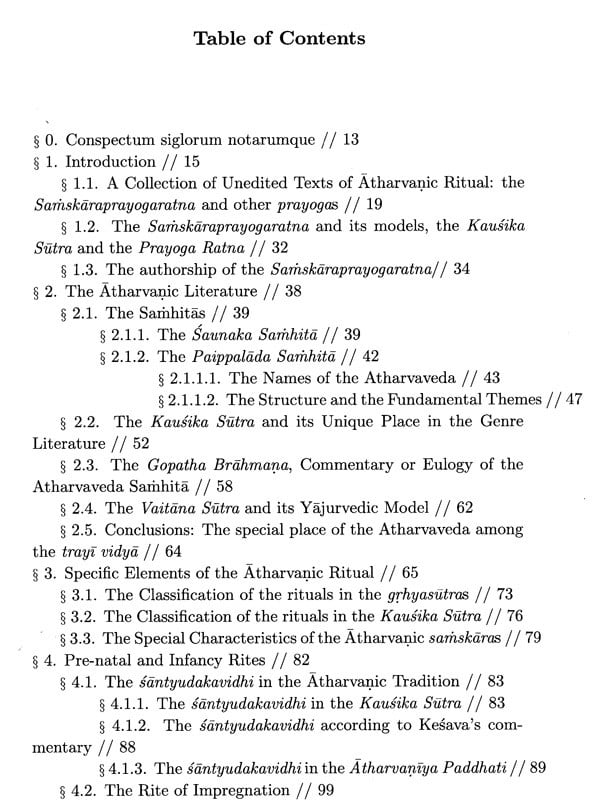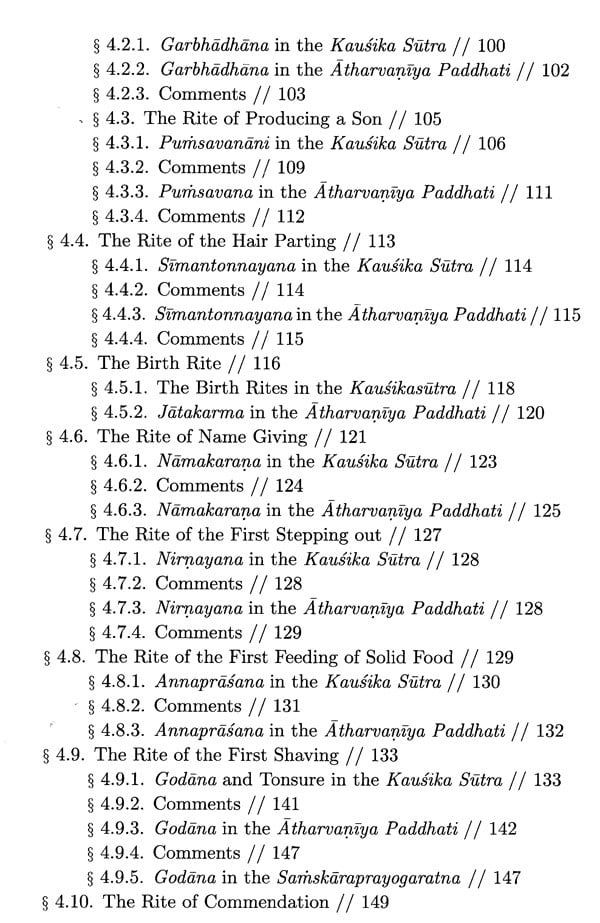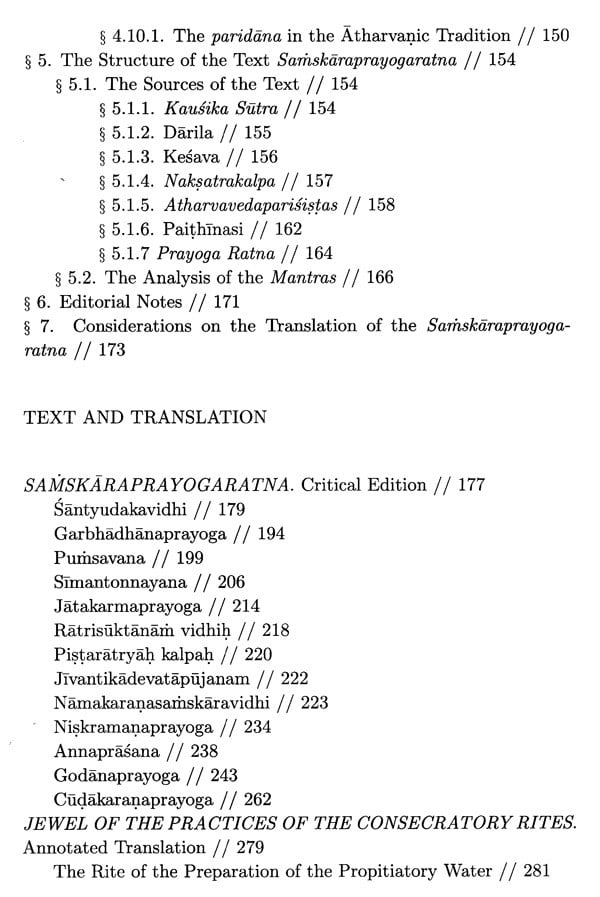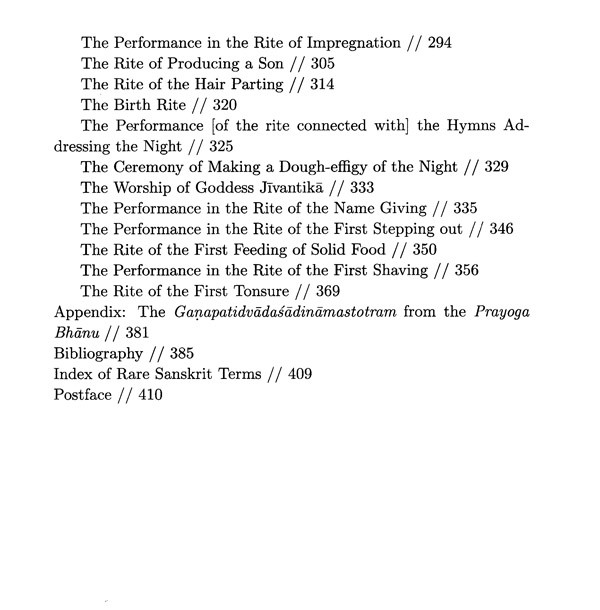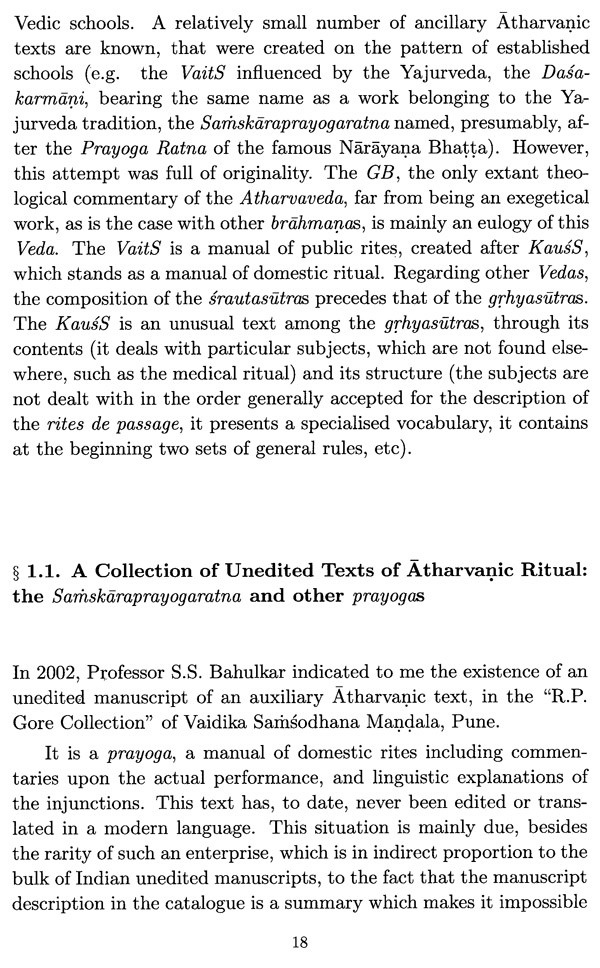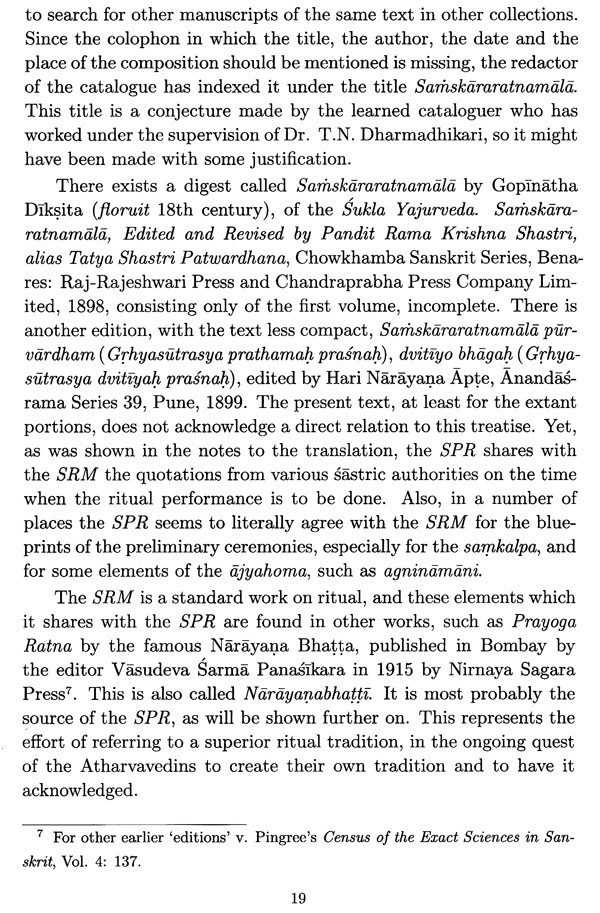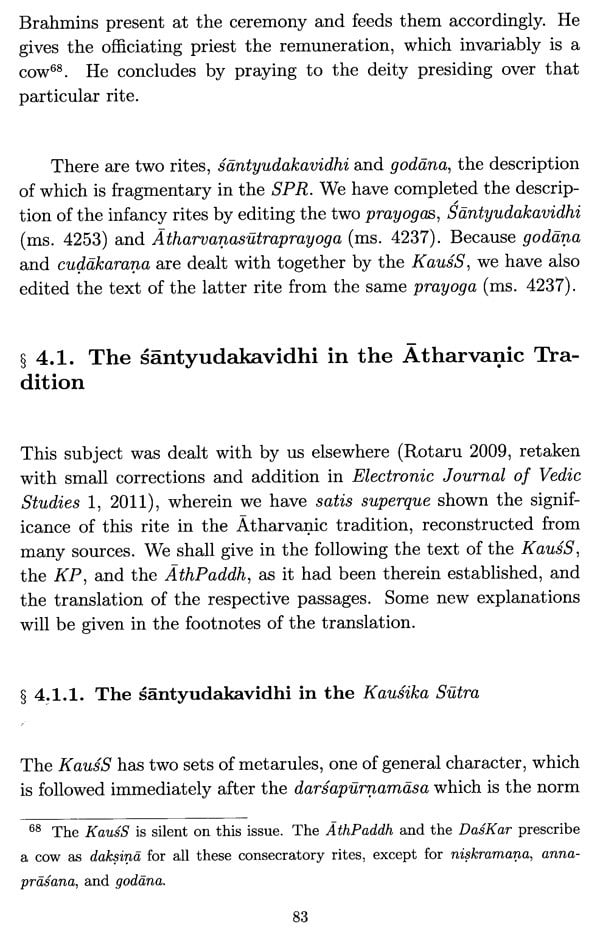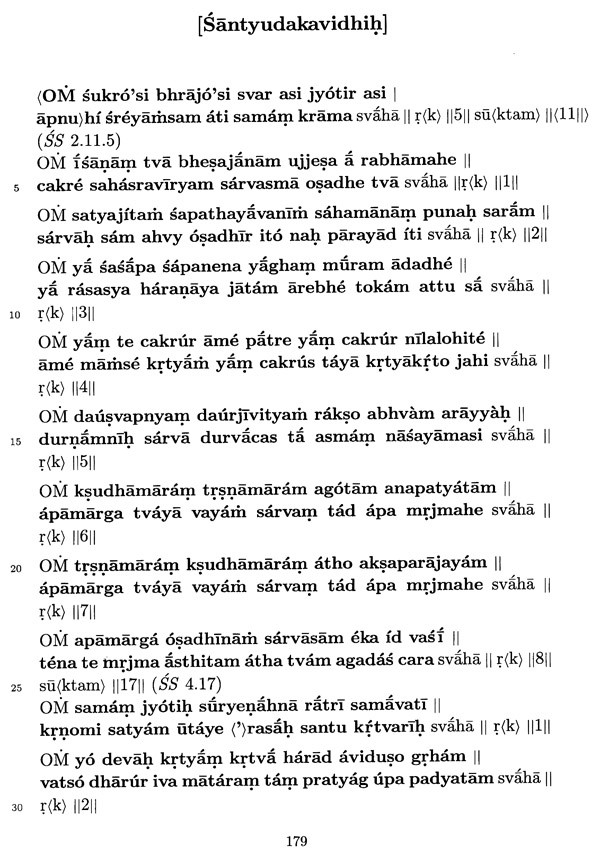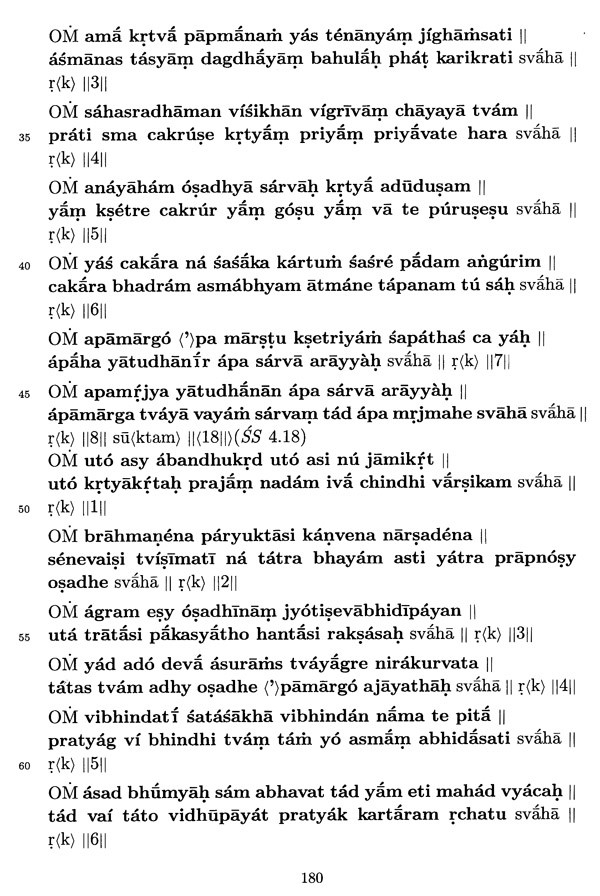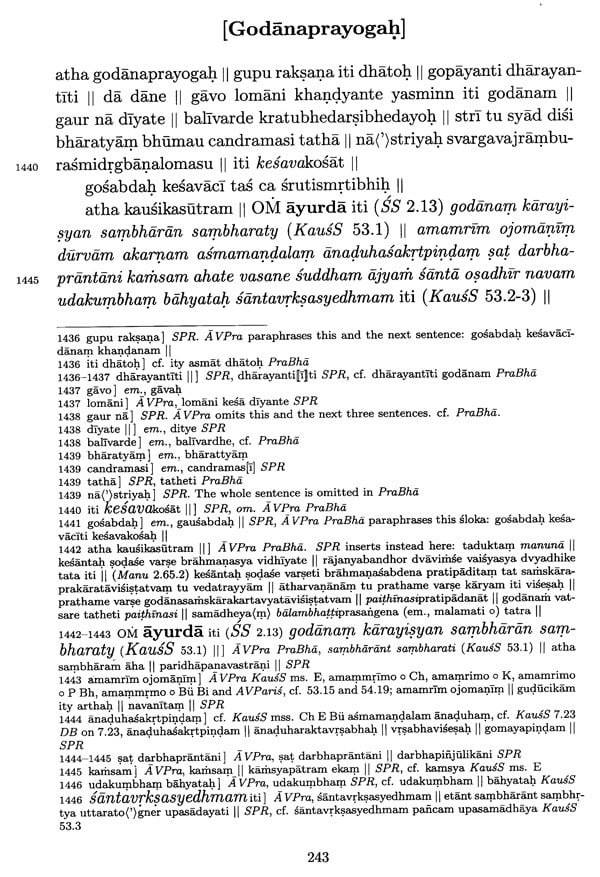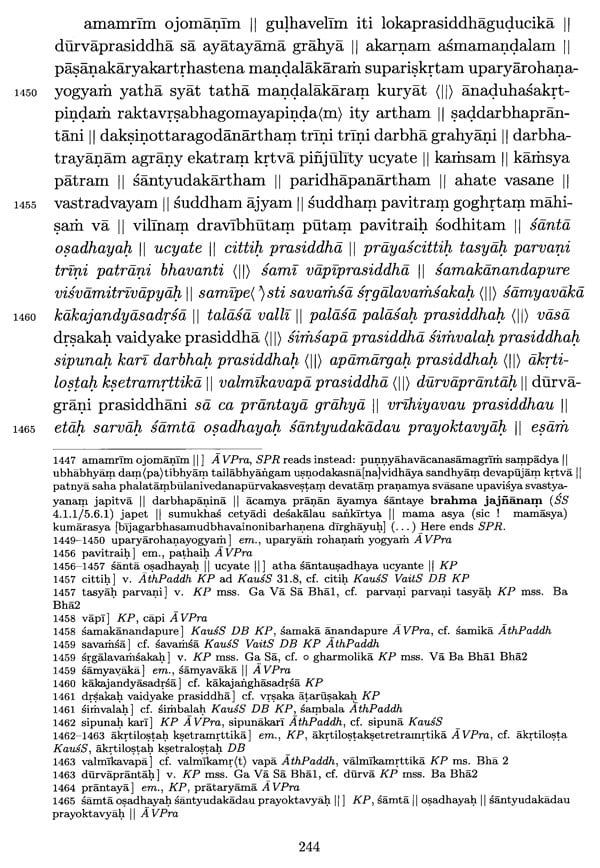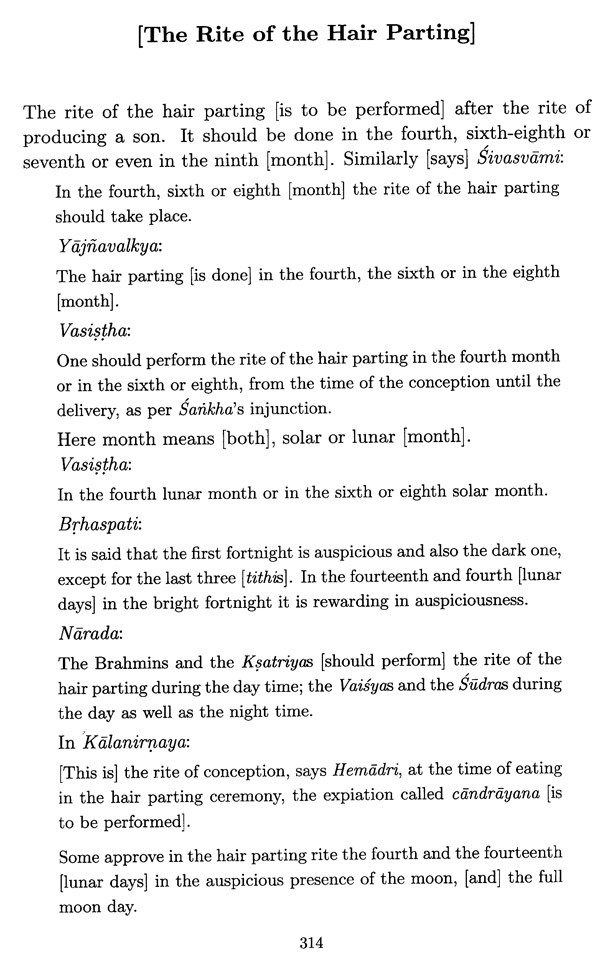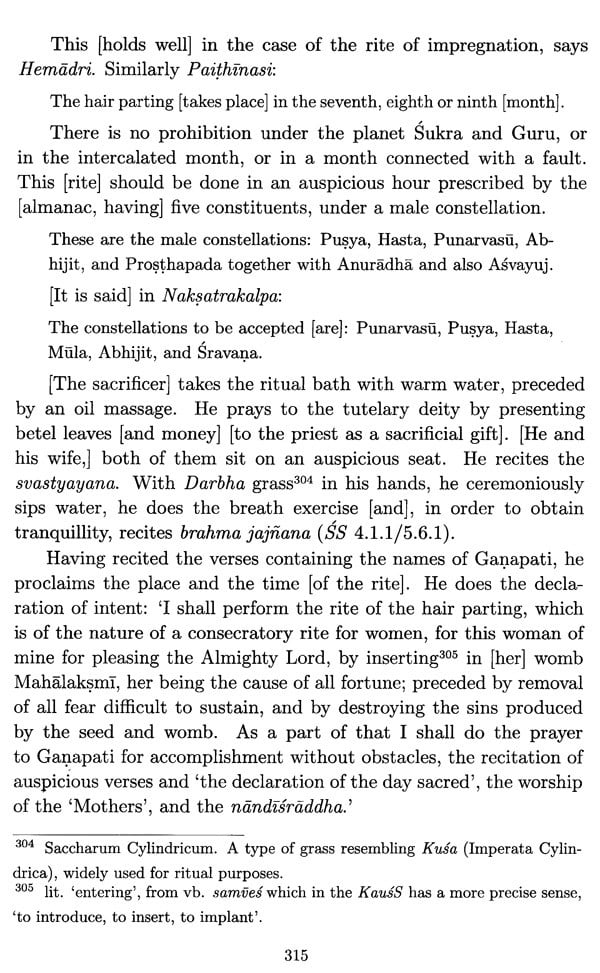
Samskaraprayogaratna- An Atharvanic Prayoga On Pre-natal And Infancy
Book Specification
| Item Code: | NBZ614 |
| Author: | Julieta Rotaru |
| Publisher: | Dev Publishers and Distributors |
| Language: | English |
| Edition: | 2021 |
| ISBN: | 9789387496569 |
| Pages: | 409 |
| Cover: | HARDCOVER |
| Other Details | 10.50 X 7.50 inch |
| Weight | 1 kg |
Book Description
In comparison with the “three canonical Vedas” which have many ritual works, Atharvaveda Saunaka has only two sutras, the Kausikasutra and the Vaitanasutra, and a small number of texts of a commentary type. The Saṁskaraprayogaratna, here edited and translated for the first time, represents an effort of referring to a superior ritual tradition, in the ever quest of the Atharvavedins of creating their own tradition and of making it accepted. In the introduction, passages of the respective rites from the Kausikasutra, Darila and Kesava and the two unpublished paddhatis (Atharvaṇiya Paddhati and Dasakarmaṇi) are translated, most of them for the first time.
Julieta Rotaru is a philologist with a background in Classical Philology, specialized in Vedic and Sanskrit, and in Romani chib and culture. She is currently Associate Professor in Romani Studies at Sodertorn University, Sweden, and Managing Editor of the Romani Studies. Continuing the Journal of the Gypsy Lore Society
I am extremely delighted to write these lines of Foreword to the book Samskaraprayogaratna, an Atharvanic Prayoga on Pre-natal and Infancy Rites, critically edited, translated and annotated by Dr. Julieta Rotaru. This book is based on her dissertation submitted to the University of Bucharest, Romania. As can easily be observed, the ritual in the tradition of the Atharvaveda has remained almost a neglected area, with the worthy exception of the pioneering works by eminent scholars such as W. Caland and J. Gonda who mainly focused their attention on the partial translation of the Kausika Sutra of the Saunaka Sakha of the Atharvaveda. The difficulties with that work have remained almost unsolved, mainly because there are certain peculiarities of the rituals in that tradition and because it was not easy to utilize the limited, exegetical material provided by M. Bloomfield in the form of excerpts in his editio princeps of the Kausika Sutra. During the past fifty years, some of those works have seen the light of the day. Thus we have two important publications, namely, Darila's Bhasya (incomplete, available in a single manuscript) and Kesava's Kausika Paddhati (complete). These publications gave impetus to further study of the ritual of the Kausika Sutra. Although other works, such as Atharvaniya Paddhati, Dasakarmani, Antyesti Paddhati, and a number of Prayogas have not yet been critically edited and published, it is not difficult to get copies of the manuscripts of those works deposited in various libraries in India and abroad. It has therefore become possible to begin a fresh study of the rituals of the Atharvavedins as described in the Kausika Sutra a major ritual text in the tradition of the Atharvaveda. Dr. Rotaru's work is one of the recent, good additions to the study of the rituals of the Atharvavedins. In the present book, she explains the pre-natal and infancy rites in the Kausika Sutra on the basis of the original sources, and includes a critical edition and an annotated translation of the Samskaraprayogaratna.
A major portion of Dr. Rotaru's work deals with a study of the Samskaraprayogaratna, a Prayoga by an anonymous author. The single manuscript of the work is deposited in the Gore Collection of the Vaidika, Samsodhana Mandala, Pune. This collection is perhaps a unique one, as it belongs to the Gore family from Sangam Mahu in the Satara district in the Western Maharashtra. This family is one the few families of the Atharvavedins who belong to the Saunaka Sakha and who have made significant contribution to the preservation and the revival of the Atharvaveda during the Nineteenth century. This can be inferred from the account of a number of Atharvavedins given by Shankar Pandurang Pandit in the introduction to his critical edition of the Saunaka Samhita of the Atharvaveda with Sayana's commentary. The Gore collection has a number of important manuscripts of the Prayoga works composed by the Atharvavedins. In her book, Dr. Rotaru makes a survey of some of the important works from that collection. The Samskaraprayogaratna is incomplete; even a complete title of the work is not available in the folios available to us. It was believed that the title is Samskararatnamala, modelled after the work of the same title in the tradition of the Rgveda. Dr. Rotaru however argues that the title is Samskaraprayogaratna, modelled after another work titled Prayogaratna. This Prayoga appears to be a priestly manual in the Saunaka tradition; it describes the rites in a lucid manner summarizing the material from the Kausika Sutra and the commentaries thereon. Since there is hardly any information available on the current state of the ritual performances in the Saunaka tradition, one may safely infer that the tradition is almost extinct. Against this background, it is important to see in Dr. Rotaru's work how the Atharvavedins in Maharashtra performed their domestic rituals towards the second half of the Nineteenth century.
I congratulate Dr. Rotaru for her successful attempt to study this subject and making it available in a book form to the community of scholars.
In ancient India, learning the Veda was a duty for the intellectual elite. The teaching was done in schools set up by instructors who were promoting new ways of reciting the Vedas. The text that each new school used was chosen by the instructor and was of the tradition he was educated in and with which, often, he had a kinship.
The texts produced by these schools (Sakha) came to be designated with the same term, covering the modern philological sense of recension. Nevertheless, the differences between schools were not fundamental. Although the authority of a certain Sakha strongly disapproved of borrowing from texts belonging to another tradition, there was a rule that, for the sake of completeness, "whatever is not established in one sakha may be borrowed from another, if there is not any contradiction"(Kane 1930-62: II, I, 328).
The Atharvanic tradition recorded as many as, nine recensions, of which only two are prevalent at present: the Saunaka and the Paippalada. It had long been thought that Saunaka represented the Vulgate, but, due to the recent discovery of new manuscripts of the Paippalada, this standpoint might need to be reconsidered. Nonetheless, Saunaka still passes for the Vulgate for a number of auxiliary texts'.
The Vedic schools had, as a rule, three types of texts affiliated to each of the four Samhitas, dealing with ritual: srautasutra (manuals of public rites), grhyasutra (manuals of domestic rites) and dharmasutra (manual of domestic rites and juridical matters). Later on, with the growing change of the ritual practices, there was a need felt for commentaries upon the sutras (bhasya, tika, paddhati). Over time, a new class of works appeared, prayoga (handbooks of instruction), belonging to a particular Vedic school, but not, however, strictly adhering to that school.
Compared to the so-called "three canonical Vedas" which have dozens of manuals on public and domestic rites, Atharvaveda has had only two so far: the Kausika Sutra and the Vaitana Sutra (VaitS). The former stands as the only extant grhyasutra of the Atharvaveda and it was edited in 1889 (1890) by Maurice Bloomfield but has never been entirely translated. Thus, our knowledge about the domestic ritual of the followers of the Atharvaveda is restricted, so far, to the information from this single published work. There exist two commentaries of this manual, which elucidate a great deal of the text, namely Kausikasutra-Darilabhasya (DB) by Darila (8th century) and Kausika Paddhati (KP) by Kesava (terminus post querm 10th century, terminus ante quem 14th century), edited in 1972 and 1982, respectively.
Attention has been drawn by Bloomfield to the Atharvaniya Paddhati (AthPaddh) and the Dasakarmani (Daskar), two so-called commentaries (paddhati) used in his edition of the Kaus’S. These commentaries represented a pretext for describing the grhya practices of the Atharvavedins in the manner of other manuals of domestic rites, and by doing this they omitted the idiosyncratic ceremonies described by the Kaus’S. For the present study we used two manuscripts of the AthPaddh from the National Library in Berlin, which were also employed in Bloomfield's edition of the Kaus’S, and one from the collection of the Bhandarkar Oriental Research Institute. For the DasKar we used one manuscript from the same institute.
**Contents and Sample Pages**
